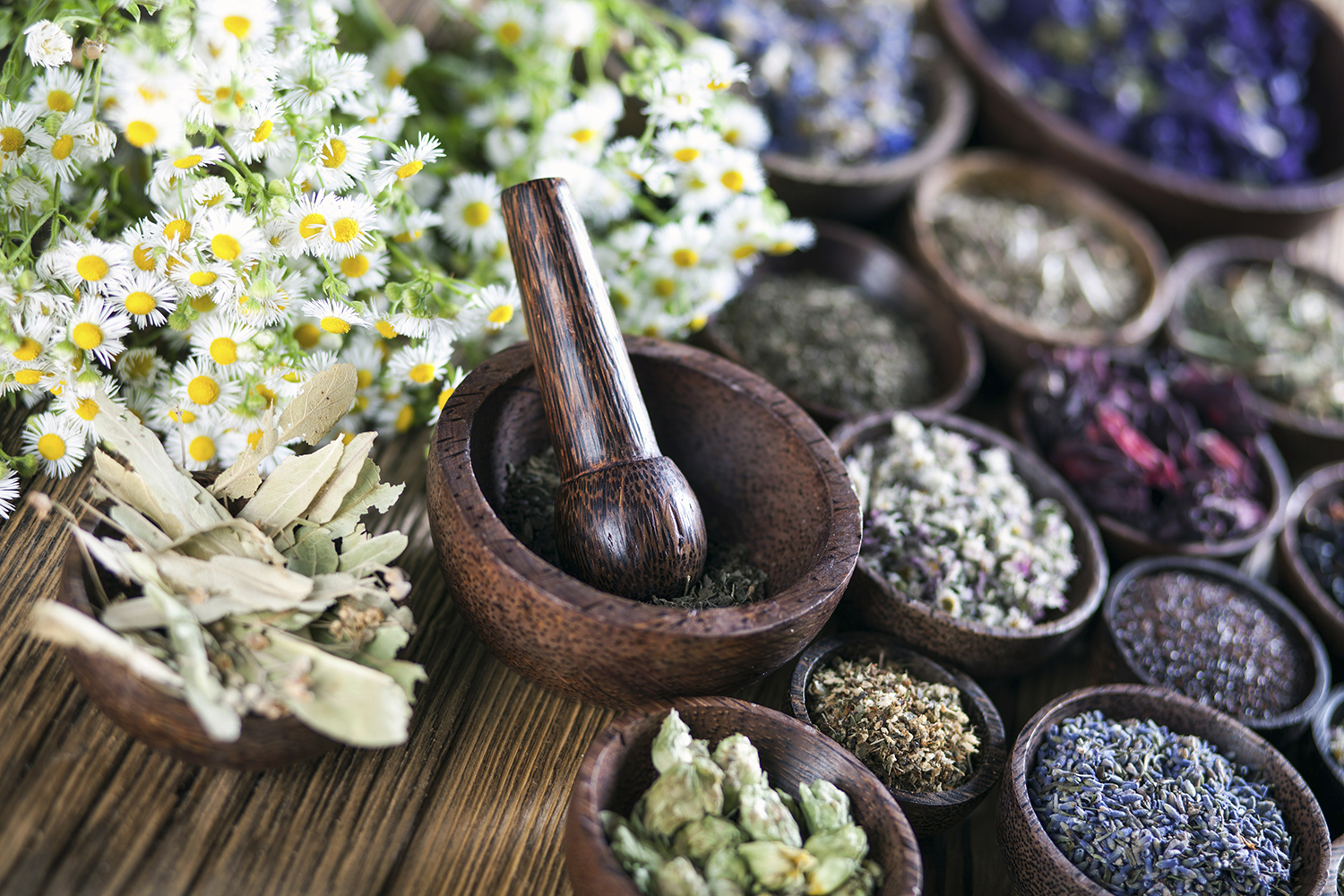China's Cultural Influence on Medicine
China’s rich culture dates back thousands of years and—with about 1.3 billion people—it is also the world’s most populous country.
Yet how many Westerners are familiar with its art, music, poetry, or literature?
Much in the news today, China and its culture are poised to exert increasing influence worldwide, powerfully affecting all of our lives. Despite the rise of China’s economic fortunes, many people in the West are unaware of the many Chinese cultural treasures that may one day benefit them.
One case in point is Traditional Chinese Medicine (TCM), historically the most important medical system in Asia. TCM is still practiced and used by millions of people in Asia—and increasingly in the West.
Harmony and Balance with Traditional Chinese Medicine
The most fundamental difference between Western medicine and TCM is that in modern Western thinking, medicine is just a way of curing disease and relieving unpleasant symptoms. By contrast, practitioners of TCM seek to help the patient find harmony and balance within and without.
In the West, we think of agents of disease attacking us and causing symptoms like headaches, nausea, or stiffness in the joints. In TCM, it is thought that the discovery of what brings our body and mind into harmony with the world we live in will go a long way toward creating health and preventing disease.
Simple practices like eating a natural diet that suits our temperament and work or paying attention to our thoughts to see if we are, in a sense, creating disease through constant negative emotions can reverse many diseases.
Differences Between Western & Eastern Medicine
It is said that some practitioners of TCM in China are paid by their patients each month when they are well, happy, and able to work. If they happen to experience symptoms like headaches or stomach pain or if they develop a disease, the practitioner is not paid during that time.
This is a custom that tends to encourage practitioners to really pay attention to their patients and help keep them healthy and symptom free. The TCM Approach Practitioners of TCM use many different methods to help their patients—who often incorporate these techniques in daily life. Some examples include pressing on key points near painful areas or quieting the mind to help relieve headaches.
Eating a diet that is not too “hot” or “cold” for each individual is often stressed. The major treatment modalities of TCM are acupuncture and herbal medicine. In acupuncture, hair-like needles are inserted through the skin at key points on the body, stimulating immune and nerve functions while relieving pain, balancing the body’s internal workings, and instilling a feeling of well-being.
Acupuncture’s Amazing Attributes
A number of well-designed scientific studies indicate that acupuncture can help relieve the pain of arthritis and injuries and may even reduce symptoms that accompany chronic diseases like diabetes and cancer. Research shows benefits with the following ailments, among others:
- Tension headaches: Results from a clinical trial published in the British Medical Journal found that acupuncture cut headache rates by almost half in human volunteers.
- Arthritis pain: Some studies show a significant reduction in pain scores over sham acupuncture (which involves just pricking the skin with the needle, but no insertion).
- Male infertility: Increases in sperm count and healthier sperm have been exhibited.
- Ability to conceive: There appears to be a link to higher success rates during in vitro fertilization.
- Chronic jaw pain (temporomandibular joint disorder or TMJ): Acupuncture shows some short-term relief of this condition.
- Dysmenorrhea (menstrual pain): Recent studies demonstrate acupuncture’s therapeutic effect.
Is Acupuncture Painful?
Are you nervous about the idea of having needles inserted through your skin? The nearly 14,000 acupuncturists in North America almost universally use sterile and disposable needles for each treatment. You should feel little to no pain when the needle is inserted if the practitioner is skilled. Most are highly skilled because they are required to study and work in student clinics for at least four years before beginning practice. Weekly treatments usually provide the maximum benefit if you can afford them, or if your insurance will cover them.
Every other week can also provide benefits, but regular visits are keys to success. Many practitioners offer a series of treatments at a reduced price, and you should be able to clearly evaluate the effectiveness of the treatments after about six weeks.
Some treatments for pain might be effective right away.
Chinese Herbal Medicine Studies
Chinese herbal medicine offers a rich pharmacopeia of medicinal substances with a 2,000-year-plus track record that adds significant support to the safety of the treatment.
By contrast, some pharmaceutical drugs undergo only months of research in humans before they’re licensed. Some of these drugs are eventually taken off the market for safety reasons, and a higher percentage are removed for reasons of purity and other manufacturing problems, according to a report by Drug Evaluation and Research.
Despite a long history of use, not all Chinese herbal remedies have modern human studies that demonstrate effectiveness for their intended purpose, but an increasing number do. In many cases, positive effects rival those of pharmaceutical drugs with typically half of the side effects—close to the side-effect rate of the placebo treatment. Herbal remedies offer a safe and often effective option, typically costing about 75 percent less than the pharmaceuticals with the same intended use.
Here are some of the most popular Chinese herbs and their common uses.
Common Chinese Herbs & Uses
Chinese herbs are often used only in mixtures of several to many herbs, and these herb blends are considered to have a synergistic action. The individual herbs can be found in many Western herbal formulas today, and many of the following herbs are incorporated into soups to provide health benefits such as immune enhancement.
| Use | Dose | Duration | |
|---|---|---|---|
| Astragalus (huang qi) | A popular immune herb that also supports digestion. Often used for chronic conditions like fatigue syndromes or just run-down immunity and frequent infections; cancer treatment in China. | Usually 6 to 12 g of the dried herb is simmered in 10 times the amount of water for 1 hour; small bottles of elixir for one dose; many formulas in pill form. | Up to a year or more. Considered a safe, tonic herb. |
| Codonopsis (dan shen) | A revered tonic that is considered safe for long-term use, especially to strengthen the lungs and increase energy. Used for asthma and chronic bronchitis sufferers or for smokers. | From 6 to 15 g in tea form. Many formulas containing this herb are prescribed by Chinese herbalists. | Long-term use is common, for at least several weeks to several months. |
| Coptis | A bright yellow herb that is widely popular for treating traveler’s diarrhea and other infections. | Small tablets in a concentrated form can be taken orally or dissolved in water to treat sinus infections, diarrhea, and many other infections. | In tea form, from 2 to 6 g per day, or 1 to 2 small yellow tablets of Huang Lian Su, up to twice daily with meals on the advice of a practitioner. For several days up to two weeks when recommended by an experienced practitioner. |
| Dong Quai | Arguably the world’s most commonly used herb. Often used daily as an energy and blood tonic by women in Asia and recommended for use before, during, and after menopause to “tonify” the female organs, increase energy, and strengthen vitality. | Used in tea form, in soups, in alcoholic elixirs, in formulas, and in capsule and tablet form. | Taken for several weeks and as needed long term, sometimes used as a food item in soups and stews with its celery-like flavor. |
| Ginseng | Widely considered the premier energy herb. Red ginseng is recommended for people 40 and older because it is considered “warm.” White ginseng is used in energy, sports, and digestive formulas and to improve alertness. American ginseng is used for chronic fatigue, long-term weakness, and recovery from illness. | Typically, 6 to 9 g is used in tea form each day. Found in many kinds of products—elixirs, tablets, capsules, skin care products, and many others–– ginseng is among the most popular of herbs. | Red ginseng is used commonly for up to a month or two. White ginseng may be used longer, and American ginseng is often considered safe for use on and off for months or years, especially in the elderly. |
Some Famous “Patent” Chinese Medicinal Remedies
These are mixtures of concentrated herbal teas in pill form that are widely used for specific ailments throughout Asia and in the West. A number of books describe the use of many famous Chinese formulas in pill form. These pills tend to be inexpensive, but products coming from China are not standardized, and in some cases, the purity and quality are uncertain. Products from American manufacturers of traditional Chinese formulas that are tested for purity and quality are available.
Here are some common ailments with the traditional formulas most often recommended for them. Acupuncture can also enhance the action of the herbs and is often used at the same time.
Fatigue & Anemia
Women’s Precious Pills (ba zhen wan), used to “build the blood” and increase energy and vitality, especially after menstruation.
Chronic Stress-Related Problems Like Insomnia and Anxiety
Rehmannia 6 (liu wei di huang wan, pronounced lew way dee wang wan), widely recommended for supporting the adrenals, tonifying the kidneys, and increasing energy and hormonal balance.
PMS
Free and Easy Wanderer (xiao yao wan, pronounced shaow yow wan) may be the top-selling Chinese ready-made formula in the U.S. Recommended for regulating blood flow during menses and reducing pain and mood swings often associated with PMS.
Common Cold and Other Respiratory Problems
Gan mao ling (pronounced gone maow ling), the most famous formula for relieving symptoms of the common cold or flu, especially when it is accompanied by fever. A few Chinese herbs are only available through a licensed acupuncturist, but the majority of them can be purchased through Chinese herb dealers in major cities and in natural products stores.
Gaining knowledge of Chinese medicine has proven to be enlightening for many, lending greater understanding of health and disease processes that literally shape our destiny.




